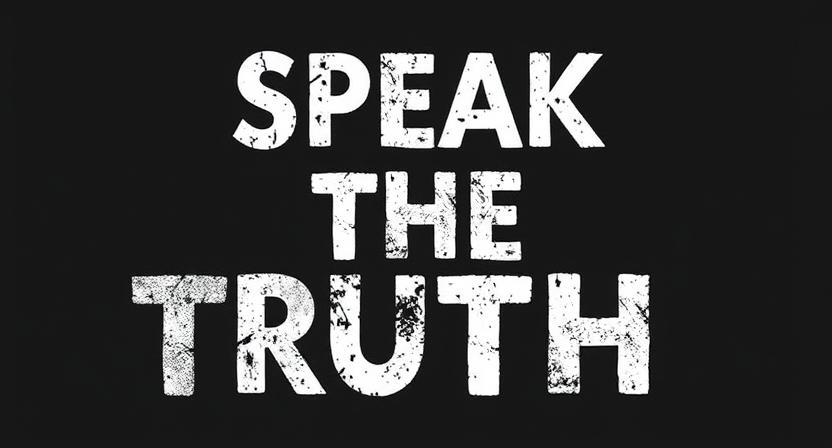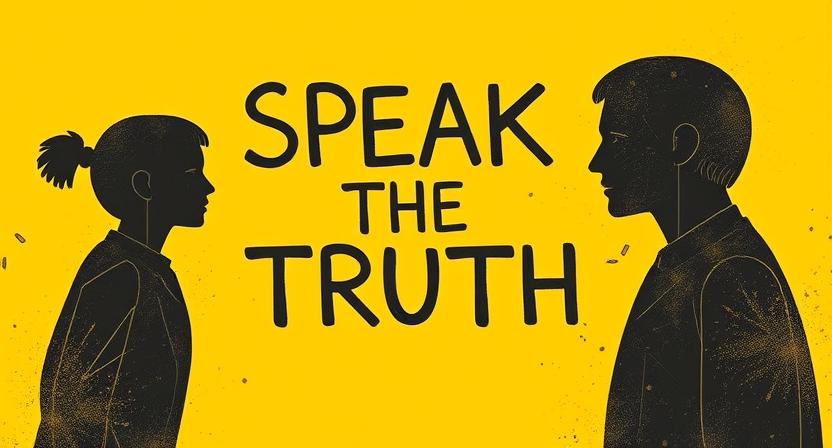The ancient Upanishads hold simple yet powerful messages for life. Among them, one short line stands out — “Satyam Vada, Dharmam Chara.” It means “Speak the truth, live righteously.”
Though written thousands of years ago, these words remain deeply relevant today. They show how to live with honesty, integrity, and purpose in a world that often tests our values.

1. What “Satyam Vada, Dharmam Chara” Means
The phrase comes from the Taittiriya Upanishad, one of India’s oldest spiritual texts.
- Satyam Vada means speak the truth.
- Dharmam Chara means to follow righteousness or live by Dharma.
Together, they form a short moral code. The first guides your words. The second guides your actions.
Truth and righteousness are not just spiritual ideas. There are ways to live every day with clarity and peace. Speaking truth builds trust. Living by Dharma builds strength of character.
When both come together, life feels aligned and meaningful.
2. The Origin of the Teaching
The Upanishads are conversations between teachers and students. They explore the nature of life, truth, and the self.
In the Taittiriya Upanishad, a teacher gives this advice to students before they leave his school. He says, “Satyam vada, dharmam chara.” It’s part of a longer farewell speech.
The teacher reminds them to live honestly, follow their duties, and honor their parents, teachers, and guests.
This moment captures something timeless. Education, in the Vedic view, was not just about learning words or rituals. It was about learning to live well, with truth and Dharma as the foundation.
3. The Heart of the Teaching
Let’s look deeper into each part of this teaching.
Satyam Vada — Speak the Truth
Truth is not just about not lying. It means your words match your heart. It means being honest even when it’s hard.
Speaking truth builds respect and trust. It frees the mind from guilt and fear. Lies may bring short comfort, but truth brings long peace.
Even silence can be truthful when words might hurt. Truth is not harshness. It is kindness guided by honesty.
Dharmam Chara — Live Righteously
Dharma is the moral path — the right way to live. It includes duty, justice, and compassion.
To follow Dharma is to act with fairness and respect for others. It means doing what’s right, even when no one is watching.
Living by Dharma keeps your actions clean and your mind calm. It connects you with a sense of purpose bigger than your desires.
4. Truth and Dharma Go Together
Truth and Dharma are like two wings of a bird. One cannot rise without the other.
Truth without righteousness can be cold or cruel. Righteousness without truth can become a blind habit.
When your words are true and your actions are righteous, your life gains balance. You speak what you mean and do what is right.
This unity between word and deed is the root of inner strength.
5. Why This Matters Today
We live in times when truth is often bent or blurred. Lies spread faster than facts. People twist words for gain.
In such a world, “Satyam Vada, Dharmam Chara” feels like a call to return to basics.
Speak the truth — not half-truths, not pleasant lies. Live righteously — not for praise, but because it is right.
Truth gives clarity in confusion. Dharma gives courage in chaos. Together, they light the way.
6. Lessons for Personal Life
The phrase may sound spiritual, but its lessons fit daily life.
In relationships: Speak truth with care. Don’t hide behind excuses. Be open and sincere. It builds trust and love.
At work: Be honest in your role. Don’t cut corners. Keep your promises. It creates respect and long-term success.
In personal growth: Be truthful with yourself. Admit mistakes. Learn and correct them. That is self-Dharma — being responsible for your own actions.
When you follow this, life feels lighter. You don’t have to remember lies or fake your image. You live as you are.
7. The Power of Integrity
Integrity means being whole — your thoughts, words, and actions match.
When you express your beliefs and act on them, you develop inner strength. You no longer fear exposure or judgment.
People with integrity attract trust. They become natural leaders. They don’t need to pretend.
The Upanishads remind us that the greatest power is not wealth or fame. It’s the quiet strength of truth and righteousness.
8. Truth and Dharma in the Scriptures
The same values echo across India’s sacred texts.
In the Bhagavad Gita, Lord Krishna says:
“Ahimsa, Satyam, Akrodhah” — non-violence, truth, and freedom from anger are divine traits.
In the Mahabharata, Yudhishthira is called Dharmaraja because he never strays from truth and righteousness, even when tested.
In the Mundaka Upanishad, it says:
“Satyena labhyas tapasa hyesha atma” — the Self is realized through truth and discipline.
Truth and Dharma are the threads that run through all Indian wisdom. They form the moral DNA of Sanatana Dharma.
9. Living These Words in Modern Times
You may wonder how to live these ideals today. Modern life is full of grey zones. Truth and Dharma seem hard to hold in a world driven by competition and speed.
But the essence remains simple. Every day offers small chances to live truth and righteousness.
- Speak truth at home and work, even when it costs a little.
- Do your duty well, even when no one sees.
- Keep promises, even when it’s hard.
- Don’t harm others for gain.
- Respect parents, teachers, and elders.
These small acts build a truthful and righteous life. You don’t need a temple or ritual. Living with truth is itself worship.
10. How to Practice “Satyam Vada, Dharmam Chara”
Start small. Practice one part each day.
- Be aware before speaking. Ask, “Is it true? Is it kind? Is it needed?”
- Check your actions. Are they fair? Do they bring peace or harm?
- Reflect each night. Where did you stay true? Where did you drift?
Over time, honesty becomes natural. You begin to feel calm and confident.
Meditation or mindful silence can help. It lets you notice how thoughts shape words and actions. Slowly, truth and Dharma become your way of life, not a rule to remember.
11. Examples from Great Lives
Many great leaders lived by this simple law.
Mahatma Gandhi built his life on truth and non-violence. He said, “Truth is God.” His honesty moved millions without force.
Swami Vivekananda spoke fearlessly because he stood on truth. He said, “You must be truthful and pure.”
Buddha based his teaching on right speech and right action — the same essence as “Satyam Vada, Dharmam Chara.”
Their power came not from position but from inner truth.
12. How It Helps the Mind
Truth and righteousness bring inner balance. Lies and wrong acts create conflict inside.
When your speech and actions are clean, your mind rests easy. You sleep better. You feel lighter.
Even when life gets tough, you stand firm. You know you did what’s right.
This peace cannot be bought. It comes only from living truthfully.
13. A Message for Students and Youth
The original verse was advice to young students stepping into life. It fits young people even today.
Marks and skills matter, but character matters more.
If you speak truth and live by Dharma, success will follow. People will trust you. Opportunities will come.
A truthful person doesn’t need to fake success. Their presence speaks for them.
Start early. Build honesty as a habit. Stay loyal to your values. That’s real education.
14. “Satyam Vada, Dharmam Chara” in Action
Let’s imagine a few daily moments:
- You find money someone dropped. Do you keep it or return it?
- A friend asks your opinion. Do you flatter or tell the truth kindly?
- At work, you spot a mistake. Do you hide it or own it?
Each small choice shapes your path. Every act of truth builds inner power. Every righteous act cleans the mind.
Over time, your life itself becomes your message.
15. Quotes That Echo the Message
- “Satyameva Jayate” — Truth alone triumphs.
- “Dharmo rakshati rakshitah” — He who protects Dharma is protected by Dharma.
- “Truth can be stated in a thousand ways, yet each one can be true.” — Swami Vivekananda
- “There is no religion higher than truth.” — Mahatma Gandhi
These words remind us that truth and righteousness are not just ideals. They are living forces that shape destiny.
16. The Final Thought
“Satyam Vada, Dharmam Chara” is not a complex philosophy. It’s a simple code that holds deep wisdom.
It asks you to keep your speech true and your actions right. That’s it.
You don’t need wealth, power, or rituals to live this teaching. You only need courage and honesty.
When truth guides your words and Dharma guides your steps, peace follows naturally. Life gains meaning, not from what you have, but from how you live.
17. Conclusion
Start today. Speak truth. Live right.
When faced with a hard choice, remember this Upanishadic line. Let it whisper in your heart —
“Satyam Vada, Dharmam Chara.”
It’s more than a quote. It’s a way to live — clear, strong, and kind.





